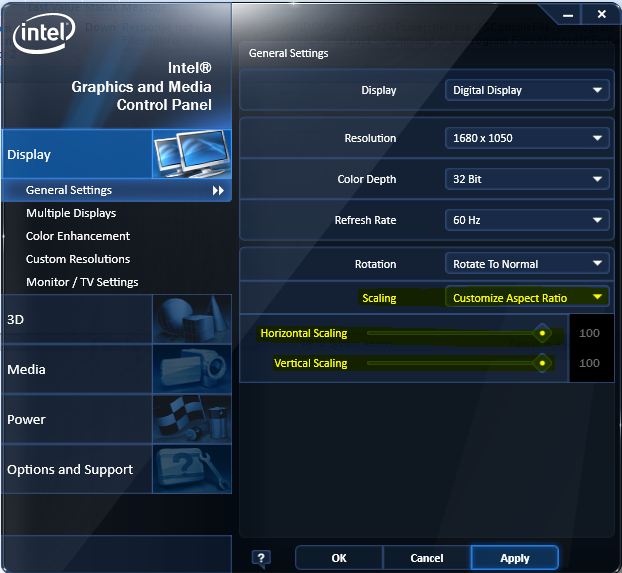My Windows Media Center HTPC is connected to a Panasonic LCD TV via HDMI and has always suffered from overscan. The Windows Media Center setup wizard applies an overscan adjustment, which fixes the problem in Media Center, but overscan is still a problem for BIOS access.
My first HTPC was an AMD build based around a Gigabyte GA-MA78GM-S2H motherboard running Windows Vista. My current build uses the on die graphics of a Core i5 processor and Windows 7. Both builds had an overscan problem.
The Intel graphics driver has a scaling option which is accessible by right-clicking on the desktop and choosing Graphics Properties. This works well in Windows, but doesn’t help with BIOS access.
The resolution to my overscan problem was found in my TV setup menu. There’s an overscan setting, which was enabled. Disabling the overscan setting resolved all the overscan problems. If you have the same problem it’s worth checking your TV setup too.
